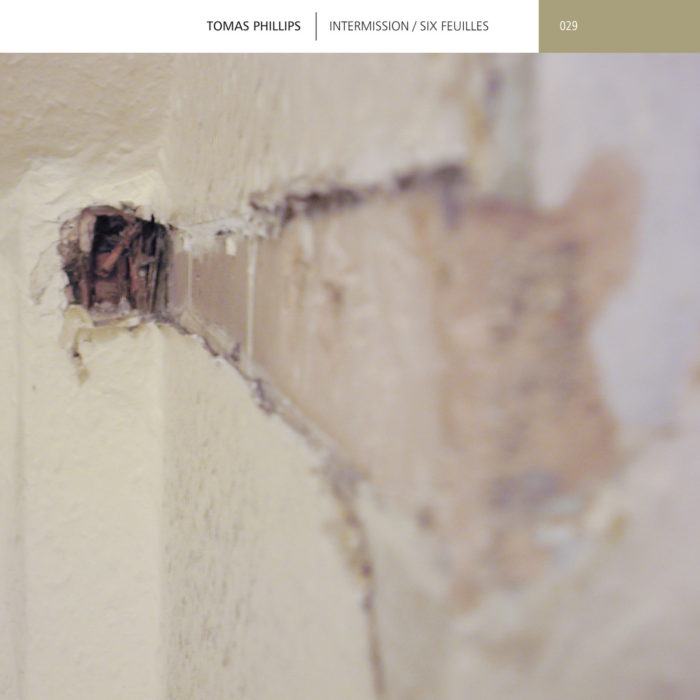LINE is proud to present Intermission/Six Feuilles by artist Tomas Phillips. This work was created out of the desire to wed acoustic and digital instrumentation in a particular compositional field, one that allows room for (a)tonal and silent gestures alike. Piano and koto are accompanied by the shifting texture of physically manipulated organic materials, in combination with minimal electronics whose function is to engage rather than to counter the non-digital elements. More than an homage to Morton Feldman, the title is a direct reference to his own series of Intermissions, from which Intermission/Six Feuilles draws much of its decisiveness and inspiration.
Tomas Phillips

Tomas Phillips (b. 1969) is a composer, novelist and teacher whose sound work focuses on improv performance and minimalist through-composition. He began composing electronic music in the early 1990s, releasing limited edition cd-rs under such monikers as Sea Optic, Lisbon and Eto Ami (with Dean King) and has since created music for installations and collaborations in dance and theater. Tomas has taught in the disciplines of literature and fine arts at various universities in the US, Quebec and Finland. He currently lives in Montreal, where he will have completed an interdisciplinary PhD by 2007. Recent releases include: On Dit (Trente Oiseaux 2003); If Not, Winter, with Tobias c. van Veen (and/OAR 2005); Anther, with i8u (Petite Sono 2006); A Travers Le Bord, with Dean King (Non Visual Objects 2006).
